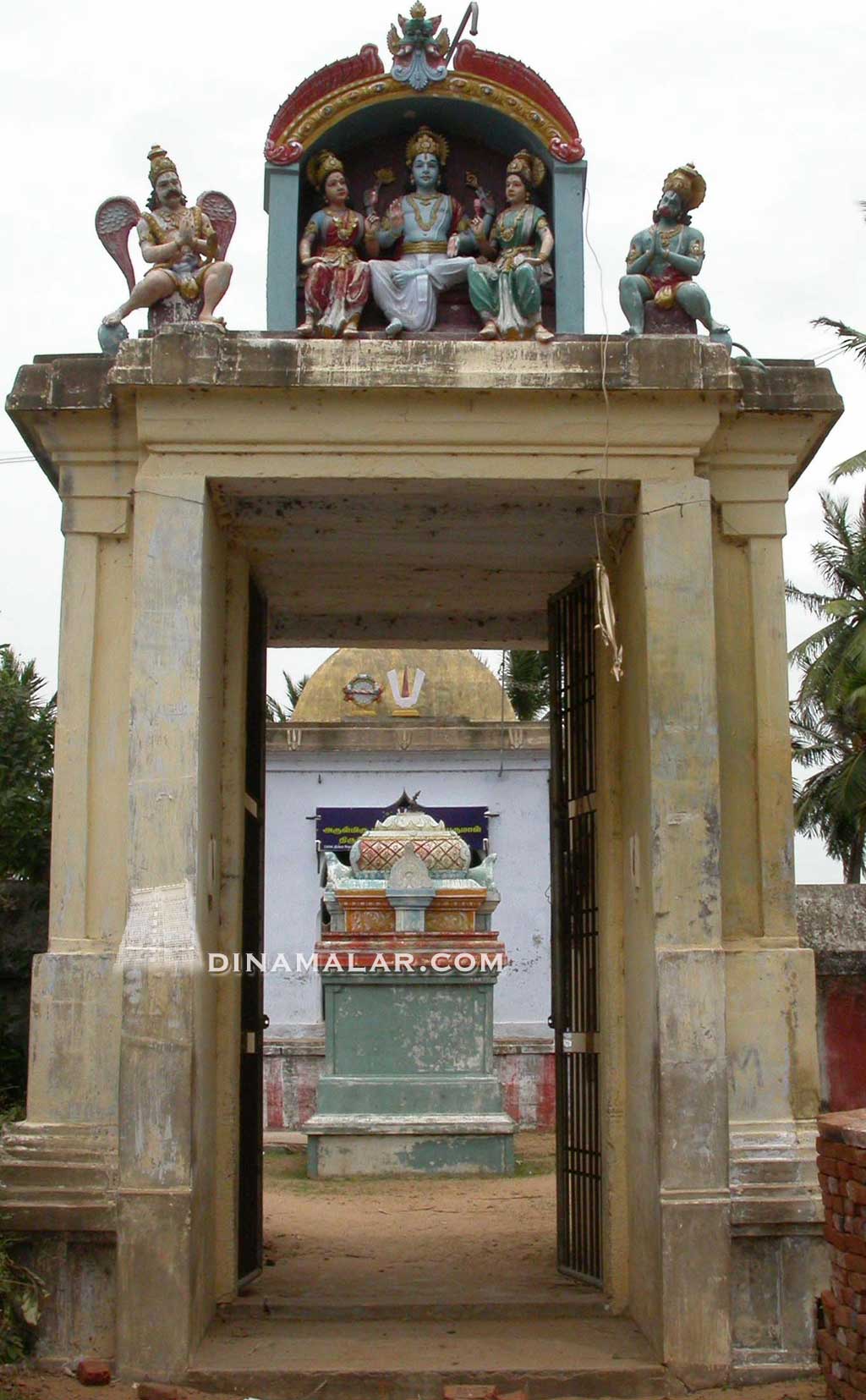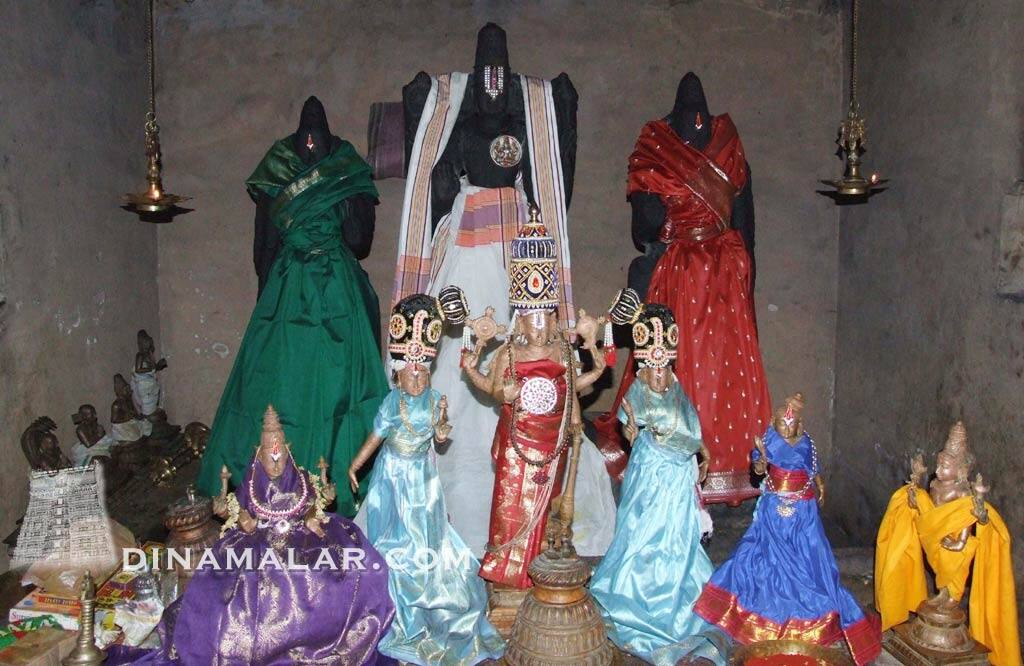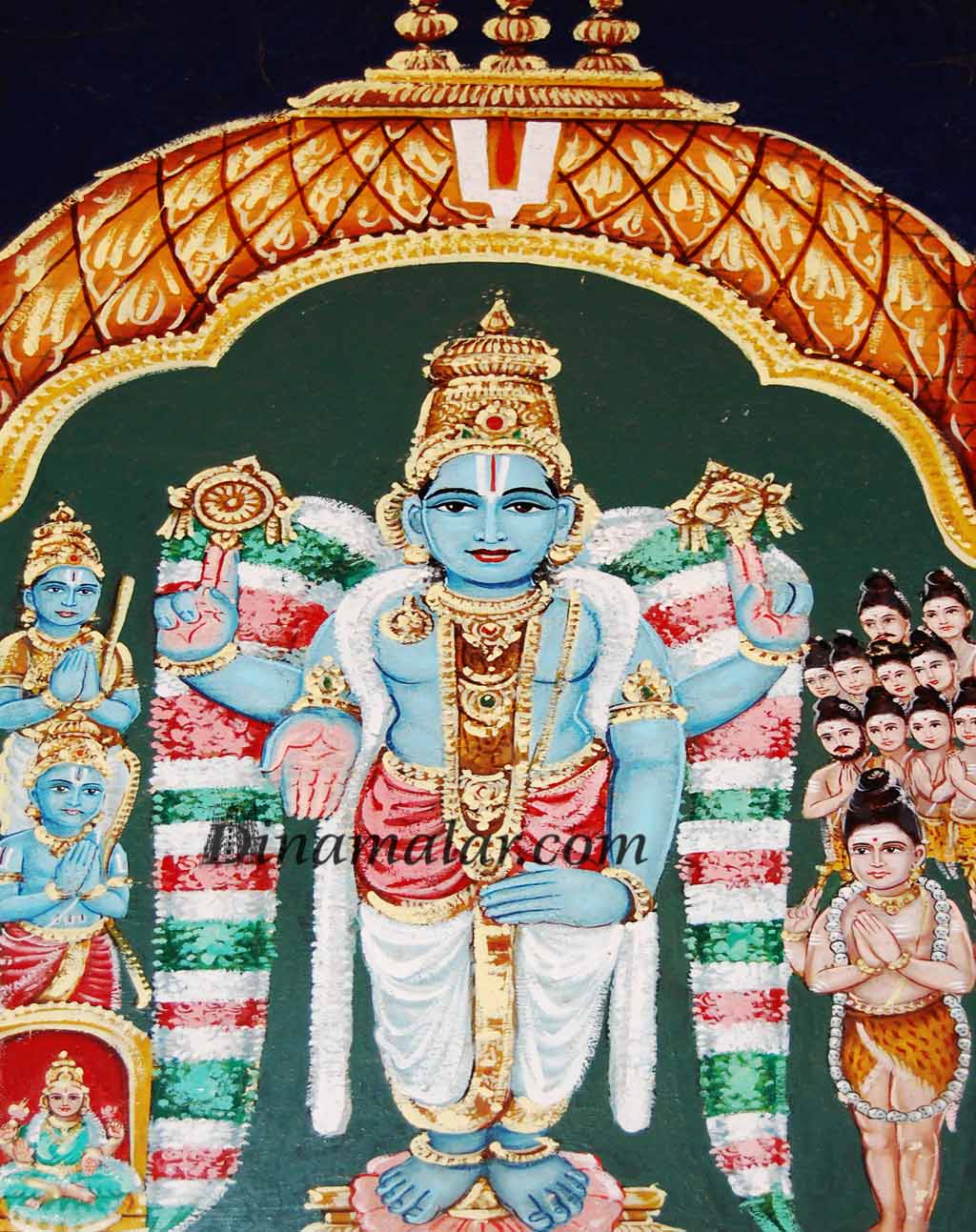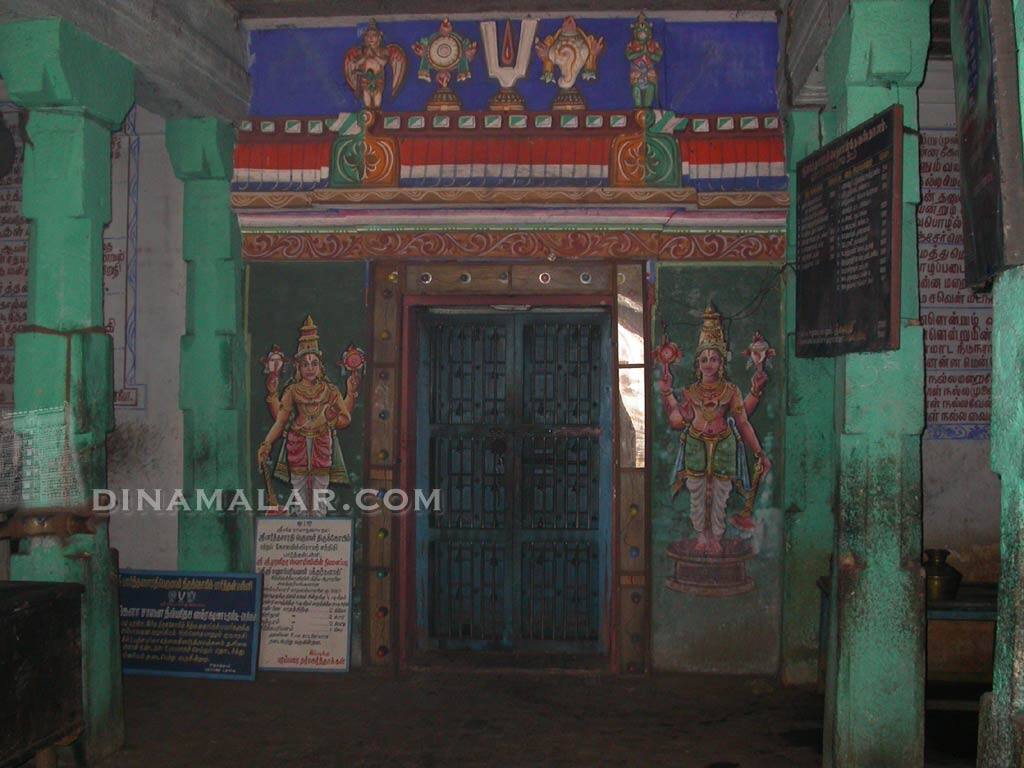GITA 10.15
Tirumangai Alwar has composed poems on 86 Divyadesams. Swami Ramanuja, an ardent devotee of the Alwar desired to visit Kshetrams. Tirumangai Alwar had visited even difficult-to-reach kshetrams also, on his horse Adalma [ஆடல்மா]. Following him, Swami Ramanuja also visited many Kshetrams. We have come to Thalaichankadu. Here both Moolavar and Utsavar are gracing in standing pose.
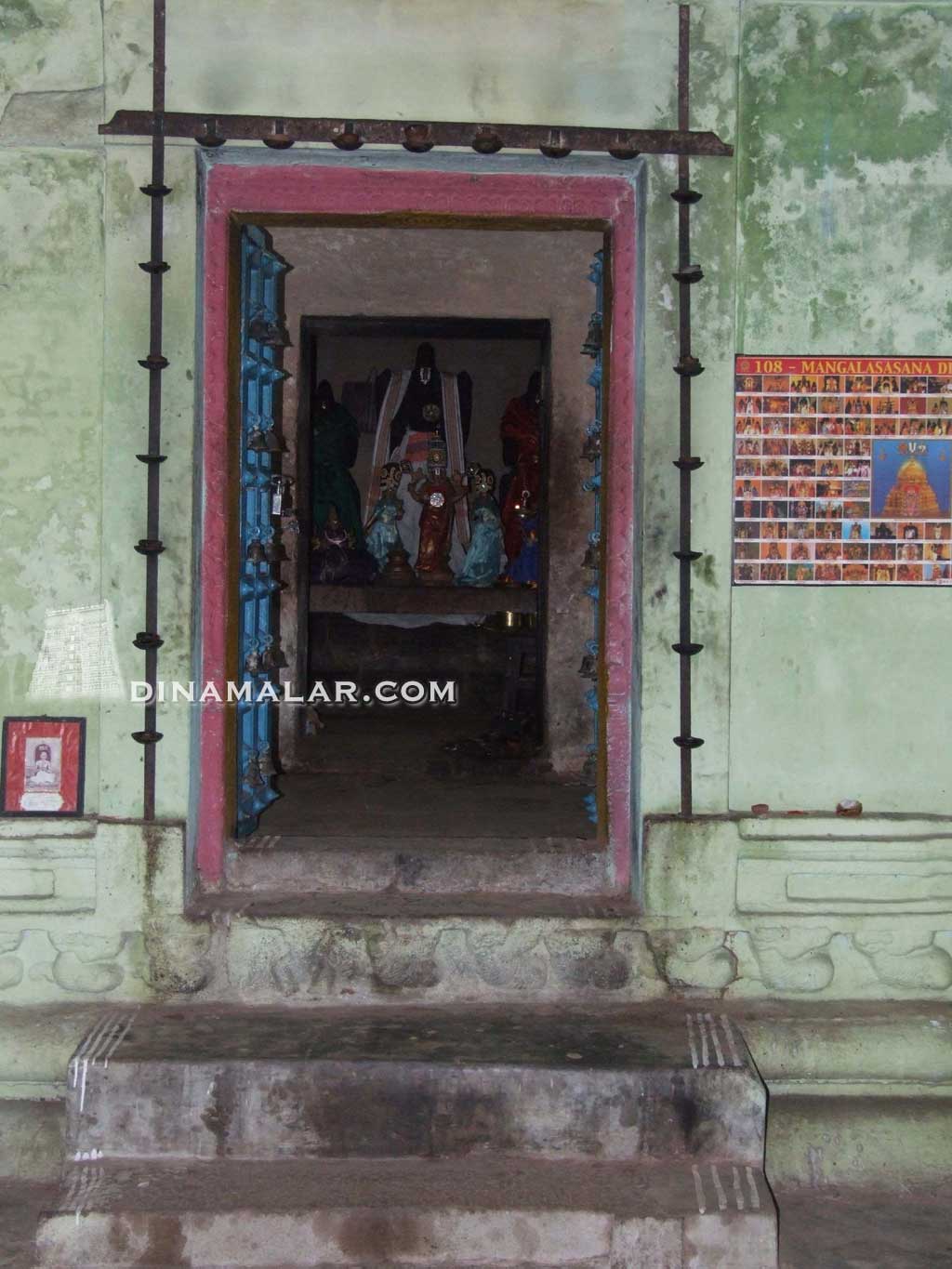 |
| MOOLAVAR SANNIDHI |
 |
| SRI THALAIcHANGA PERUMAL |
Moolavar is called Sri Nanmadhiya Perumal. As told earlier the reason for this name is that like the Moon showering coolness daily, the Lord does to His devotees. Moolavar is in standing pose with one arm in Abhaya mudra and the other is Kati hastha. Besides He is also holding the discus and conch. Utsavar is having Abhaya hastham and the firmly pressed feet indicate that He is common to all. We worship the Lord with discus and conch and accompanied by the Twin Consorts.
 |
| SRI UTSAVAR |
We also worship Sri Senkamalavalli Nachiar seated nearby.
 |
| WITH SRI SENGKAMALAVALLI THAYAR |
Utsavar is called Sri Ven Sudar Perumal [ஸ்ரீ வெண்சுடர் பெருமாள்]. Sri Thayar is called Sri Nanmadhiya Thayar. They are gracing to cool off our samsaram heat. The Moon got his curse resolved. Being near Kaviripoom Pattinam, conch business was flourishing. The Lord here also graces in the form of a Conch. Conch is considered as a form of Pranavam [AUM- ஓம்]. Tirumangai Alwar has praised this Kshetram in his Periya Thirumozhi 8-9-9 pasuram [kannaar kannapuram..கண்ணார் கண்ணபுரம்..]. This pasuram comes in the 100 pasurams sung in praise of Tirukkannapuram [திருக்கண்ணபுரம் ] Kshetram. It is a habit of the Alwar while composing poems on one Kshetram, suddenly he would remember another Kshetram's Lord - that place could be very far off - and continue the pasuram with the name of that Kshetram. Sometimes in the same pasuram, he would mention Four or Five Kshetrams also. Here also in this pasuram he mentions Tirukkannapuram, Kadigai [Sholinghur] and Thalaichanga Nanmadhiyam. He praises the Lord as being worshipped by Heavenly persons with flowers. He says like the rising Sun, He graces them with Moon's coolness. We may think there is contradiction in this description. What he means is like the Sun's rays, the Lord's fame is spread far and wide. Sun's heat is not mentioned here. Like the Nityasuris happily enjoying the grace of the Lord, in Vaikuntam, the Alwar wants to worship the Lord here always. Arjuna also praises the Lord similarly.
We will see sloka 15:
svayam evatmanatmanam
vettha tvam purushottama
bhuta-bhavana bhutesa
deva-deva jagat-pate
vettha tvam purushottama
bhuta-bhavana bhutesa
deva-deva jagat-pate
"Indeed, You alone know Yourself by Your own internal potency, O Supreme Person, origin of all, Lord of all beings, God of gods, Lord of the universe!"
(continued)
